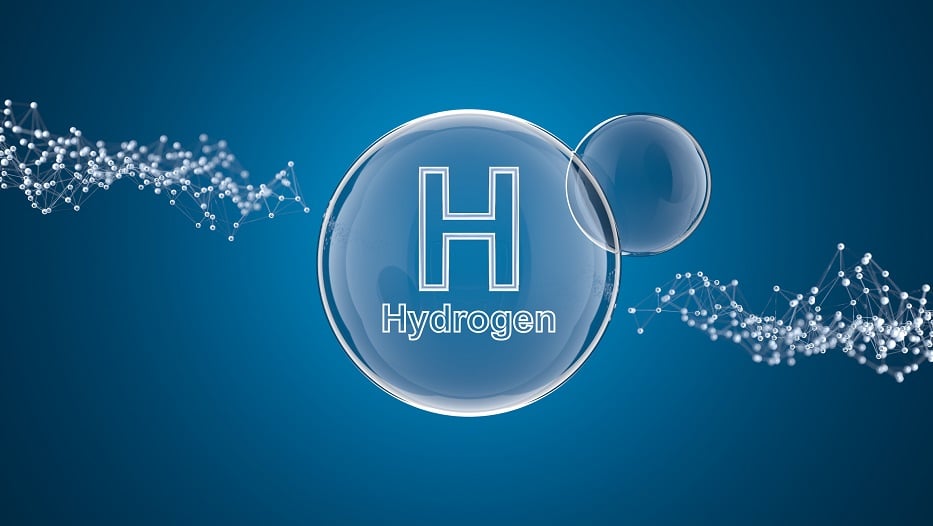Adán Cubillo Hurtado | 23/05/2022
Marked as one of the key elements of a renewable energy future, green hydrogen is becoming increasingly present in environmental development strategies. Its potential as the axis of a specific economy materializes in what are known as ‘hydrogen valleys’, structured ecosystems to facilitate the production and consumption of this energy vector, with the objective of maintaining its use in the industry and strengthening the scope to areas such as transportation, institutional activity, or citizens.
The last few years have been key to establishing hydrogen as an energy vector, with significant progress made in the industrial field, but also with initial steps in areas such as freight transportation, as explained by Javier Brey, Chairman of the Spanish Hydrogen Association in a recent interview with the Risk and Insurance Management Journal. This favorable context was strengthened for Spain in December 2021, when a Strategic Project for Economic Recovery and Transformation (PERTE [Proyecto Estratégico para la Recuperación y Transformación Económica]) was approved in the field of renewable energies, which will mobilize an investment of more than €16.3 billion, with a public sector contribution of €6,900 and a planned private investment of around €9.5 billion. Hydrogen, the key vector for achieving a clean, safe, and affordable energy future, is the element of the PERTE that receives the most support: €1.555 billion, which will mobilize another €2.8 billion in private capital.
In this future scenario, one of the most probable landscapes will be the so-called ‘hydrogen valleys’, which are already beginning to be drawn up in countries such as Spain and Argentina, and which could be the basis of a hydrogenated economy.
What is a hydrogen valley?
These initiatives start with a vision of progress, as they are based on the decarbonization of economies and the progress of green hydrogen, which is obtained from renewable sources. As Javier Brey explained to us in the aforementioned interview, sustainable production would be carried out “through electrolysis if we used a renewable source of electricity: photovoltaic, wind, etc. When used in a turbine engine or fuel cell, it does not emit carbon dioxide into the atmosphere. In other words, it is a clean fuel, from production to its use”. The regulatory, climate, and social conditions make Spain a region with great potential for integration.
But what are hydrogen valleys exactly? We are talking about structured ecosystems to facilitate the production and consumption of sustainable hydrogen in a certain area, which would allow the integration of the value chain of this energy vector beyond the industrial field, although with this as a strategic base. The production and distribution capacity of green hydrogen (produced with renewable energy) in the territory would be the starting point to create an environment favorable to its distribution and use. In some cases, the efforts are directed towards a certain area, such as port activity or freight transportation. In others, the objective is broader and oriented towards the energy demand of the population or projection abroad through hydroducts.
To achieve the sectoral integration of hydrogen in a territory, it is necessary to promote clusters that bring together companies from inside and outside the energy sector, as well as a commitment of the public administrations. This compendium of agents is usually linked to fossil-based hydrogen consumption points, to replace it with renewable hydrogen.
Promising success stories
With the strategic push in the face of the climate emergency, the search for an integration of hydrogen generated by renewable energies has become a priority for many administrations, which are trying to make a profitable gap for this energy vector in their industries and economies. One of the regions with the greatest potential, due to its great energy experience and its geostrategic position in the future Spanish and European hydroduct network, is Tarragona, which already has an important project in the making: the Catalan Hydrogen Valley, which was launched in October 2020 with the objective of bringing together all the agents necessary to promote knowledge, produce, and implement this energy alternative. In these two years, it has become a fully consolidated strategic initiative in which more than seventy companies and over fifty public bodies participate, as well as research and study centers. According to the project’s presentation video, “the European Union and governments are firmly committed to starting a transition towards the era of renewable hydrogen, decarbonizing the main economic sectors, creating new products without generating a carbon footprint, strengthening renewable energies thanks to the hydrogen storage capacity, and implementing its use in all forms of mobility and also in the residential field”.
This transformation directly affects numerous sectors, such as the transportation of goods and the chemical sector, which will enable the creation of thousands of jobs. The development of structures that align the main agents of society (universities, industry, and administration) around the hydrogen value chain could attract significant investments and strengthen the well-being of a region.
In this regard, another project was presented in Spain in October 2021, the H2VLC, a hydrogen valley backed by Valencia City Council. This plan is intended to promote, in particular, the use of green hydrogen in the transportation and logistics sector in the metropolitan area and the Port of Valencia. At the starting point, over 40 companies, entities, and institutions joined immediately. This initiative, whose technical coordination is the responsibility of the Polytechnic University of Valencia (UPV [Universidad Politécnica de Valencia]), has, according to the educational institution, “a global budget of more than €170 million, and aspires to achieve the financial support of the Spanish Government’s Recovery, Transformation, and Resilience Plan”. Within this program, José E. Capill, the dean of UPV, announced the intention to include 21 high-impact projects that range “from the construction of specific infrastructures for the generation and dispensing of green hydrogen for transportation, to the acquisition of trucks, buses, vans, urban and industrial logistics vehicles powered by what is considered the fuel of the future”.
In the north of the country, we can find another specialized center known as the Basque Hydrogen Corridor (BH2C), which has the participation of 8 institutions, 12 knowledge centers and associations, and 58 companies. In its statement of intentions, the corridor is based “on a comprehensive strategy, which includes 34 projects throughout the value chain and aims to be a lever to transform the productive fabric and maintain the weight of the industry” in the regional economy. With a public-private collaboration base, BH2C “unites the economic, social, technological, and environmental dimensions, among others, thanks to the investment of more than €1.3 billion euros until 2026, generating over 1,340 direct jobs and 6,700 indirect jobs”. With regard to its specific sustainability objectives, the intention is to achieve the production of 20,000 tons of green hydrogen annually, which in this four-year period “will prevent the emission of 1.5 million tons of CO2, spending the first few years focusing on the infrastructures and applications necessary to deploy a corridor that will mark a before and after in the Basque energy transition”.
The institutional support, the clear sustainability objectives, and the exponential flow of investment are profiling, as can be seen with these examples of specific development in our geography, a promising future that could fulfill Spain’s expectations to consolidate itself as an international power and reference in the hydrogen economy.





